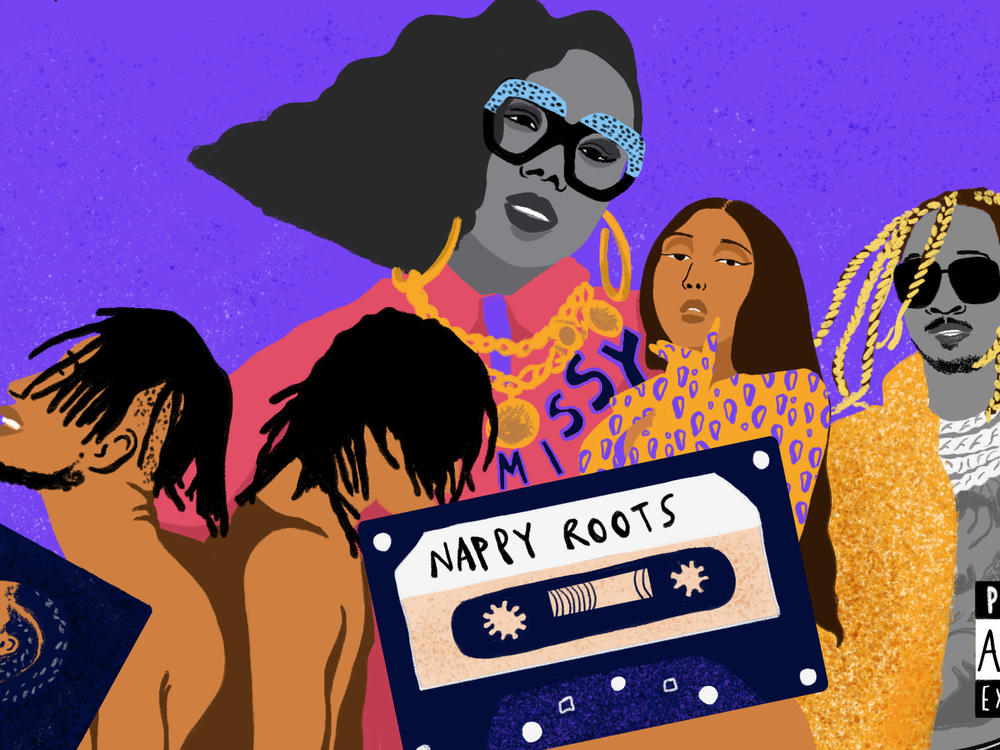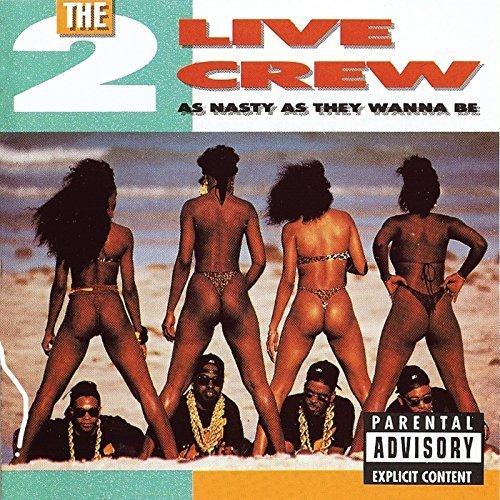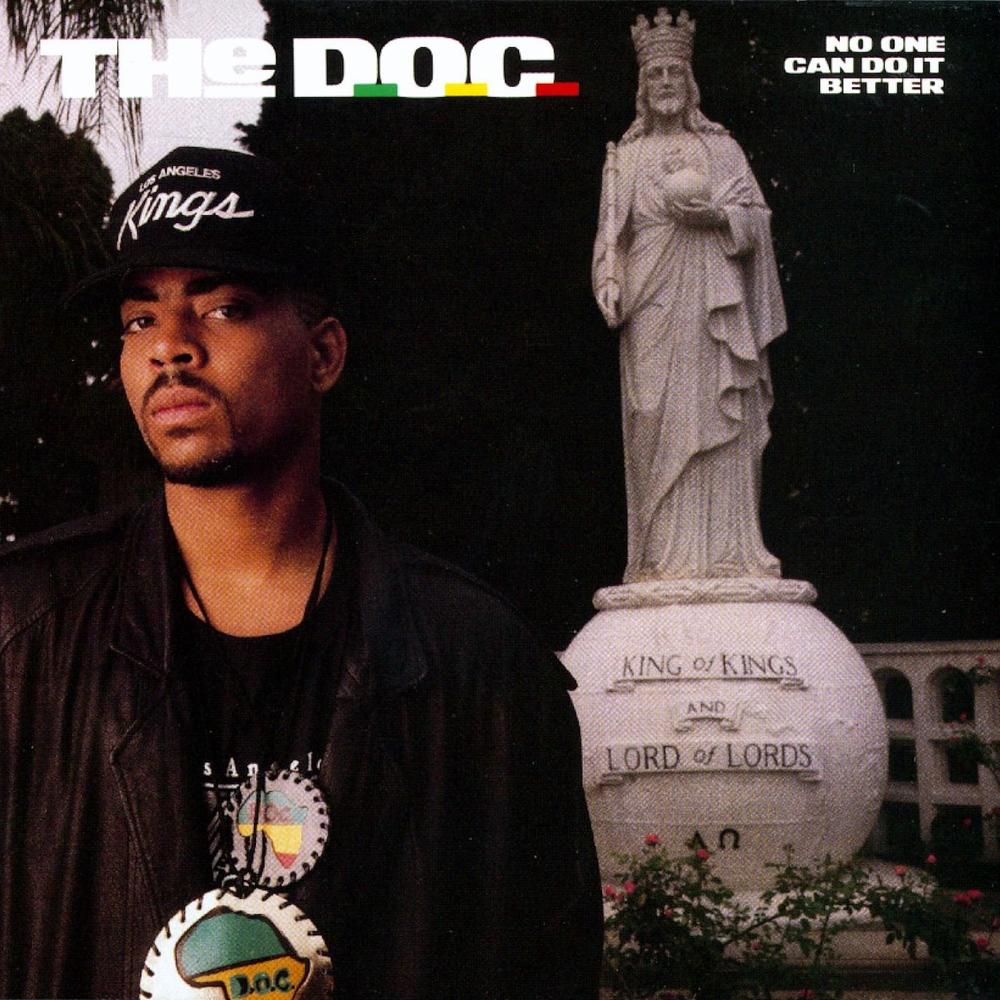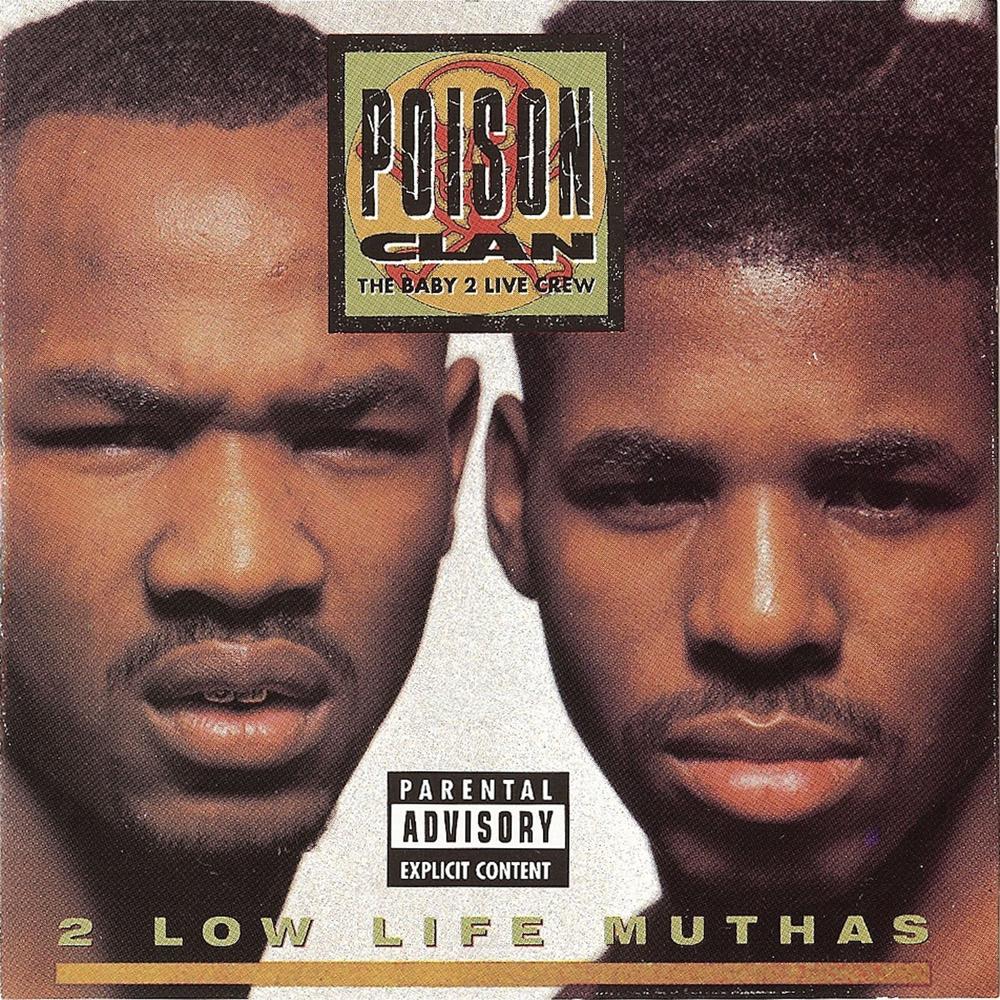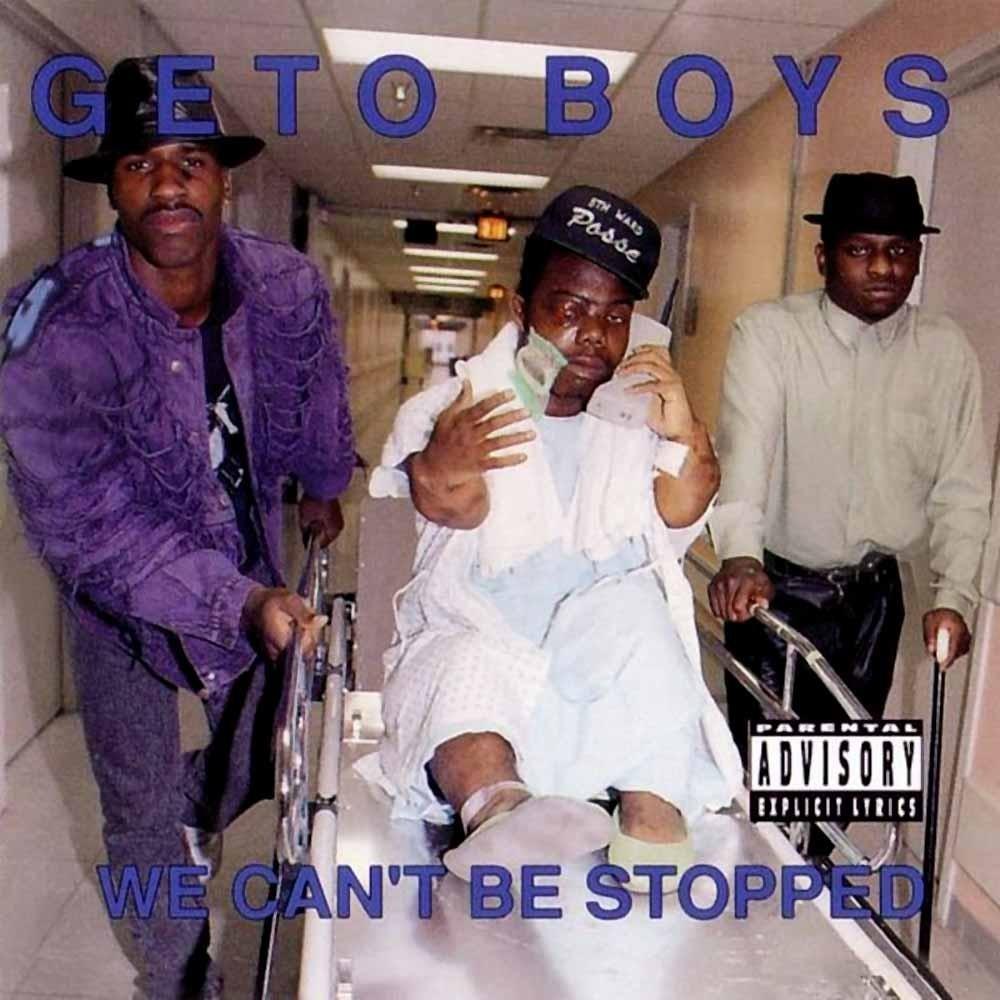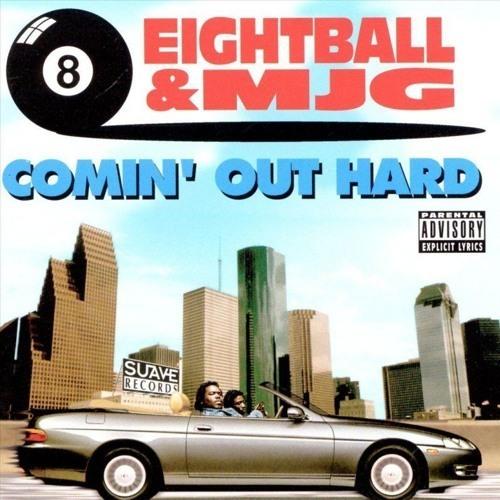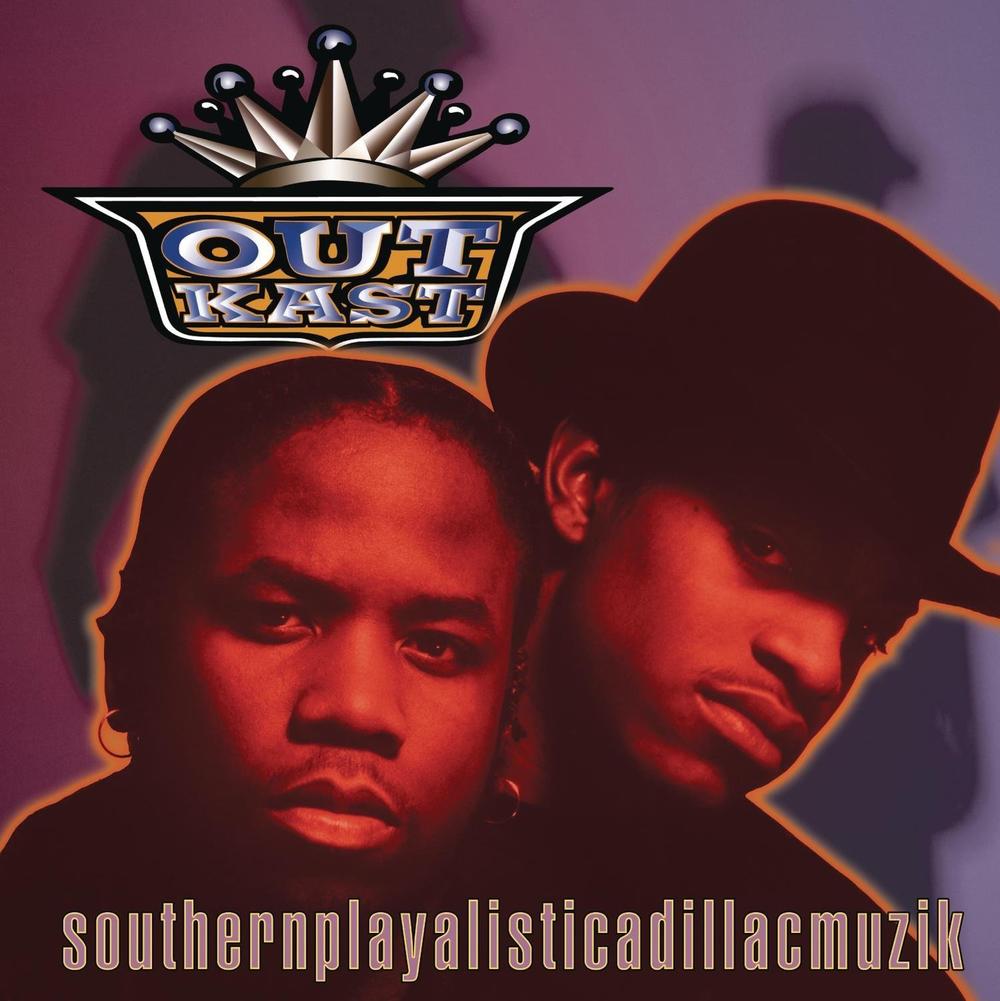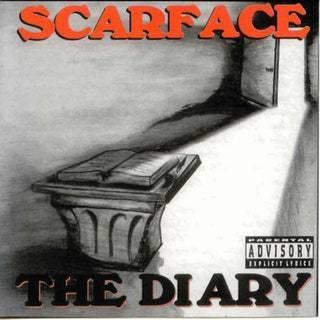Section Branding
Header Content
The South Got Something To Say: A Celebration Of Southern Rap
Primary Content
At the 1995 Source Awards, André 3000 issued a proclamation, or a prophecy: "The South got something to say." Inspired by his words, this list represents some of the most impactful songs, albums and mixtapes by Southern rappers. It was assembled by a team, led by Briana Younger, of Southern critics, scholars and writers representing the Carolinas, Georgia, Florida, Maryland, Mississippi, Texas, Tennessee, Louisiana and Virginia.
We offer this list not as an authoritative canon but as an enthusiastic celebration that recenters the South's role as a creative center of hip-hop and presents the region for all that it has been and given to us.
1989
Dismiss the locker room talk and sophomoric humor of the 2 Live Crew if you will, but this 18-track, four-movement album is not only the reason your favorite trap rapper can say whatever the blank she wants as long as she slaps on an "Explicit" label, but it also offers an overdue study in how essential sampling is to hip-hop, a genre that endures because it's an amalgam of every precursor borne of the African diaspora. The Eleventh Circuit Court of Appeals had little choice in overturning the Southern District of Florida's ruling that the Crew's third album was too obscene for audiences; its numerous references to the preceding decades' most memorable musical and filmic simulations and send-ups of sex had already slipped by censors. (For all those samples, get thee to Wikipedia and, for real heads, to Brian Coleman's Check the Technique.) As Nasty As They Wanna Be allows us to examine how we got from a moment when hip-hop was niche, making fun of middle-class respectability politics, to its present-day ubiquity, hypersexuality out front and all the way live.
Producers Luther Campbell — here as Luke Skyywalker, a stage name he'd lose to a successful suit by George Lucas and 'nem — and Mr. Mixx (David Hobbs) re-create the cinematic atmosphere for the adult storytelling, hijinks and guffaws to unfold. Relocating Trinidad-born, Brooklyn-bred Fresh Kid Ice (Christopher Wong Won) and upstate New York native Brother Marquis (Mark Ross) from Southern California, Campbell and Hobbs push the envelope open with the infamous 808-heavy lead single "Me So Horny." Then, they seamlessly weave together Afrobeat and Latin soul ("Put Her in the Buck"), dancehall ("Reggae Joint"), go-go ("Bad Ass B****"), blues ("2 Live Blues"), rock ("My Seven Bizzos," "Fraternity Record") and straight-ahead, properly scratched rap ("Dick Almighty," "C'mon Babe," "Dirty Nursery Rhymes"). On its "clean" version, the outfit even included a rockabilly parody of Roy Orbison's "Oh, Pretty Woman" that yielded another victory for free speech in court. Don't sleep on the original 2LC. —L. Lamar Wilson, Ph.D.
Tracy Curry of West Dallas, known as The D.O.C., inspired rappers in Texas and across the South to hold their own against MCs from the East and West Coast. When asked about The D.O.C.'s legacy, André 3000 stated, "As far as Southern rappers ... he was like the first real rapper that we looked up to that could really rap." In the genre's beginnings, Southern MCs were stereotyped as one-dimensional and unoriginal; The D.O.C acknowledges this categorization on his one and only album, No One Can Do It Better. On opener "It's Funky Enough," he declares "I am not illiterate, no not even a little bit / Nothin' like an idiot, get it / You want the record, cool, I'm with it." No One Can Do It Better disproved coastal naysayers through the rapper's lyricism, which unfolds over 13 diverse freestyles that incorporate dancehall and in-house live instrumentation over interpolations of funk and New York breakbeats, a nod to the genre's birthplace.
Despite criticism for his West Coast affiliations and contributions to gangsta rap, The D.O.C. was the first king of the South: "The boss, straight from the South / Word is bond from word of mouth / So let the nation be hip to the fact that I'm the great one," he proclaims on "Lend Me An Ear." The sentiment also surfaces on his first placement with N.W.A. and The Posse as Doc-T of the Fila Fresh Crew—"I ain't no East Coast rapper, this is a Southerner's song / Be warned, it's hard to try and hold a project born"—as proof of his proudly Southern roots in a predominant East Coast hip-hop era. His migration from Dallas was out of necessity to utilize the resources of an emergent Los Angeles scene, as his home region's lack of infrastructure would've likely hindered his transition into a national market. When No One Can Do It Better peaked at No. 1 on Billboard's Top R&B/Hip-Hop Chart in 1989, The D.O.C was highly regarded as Dallas' biggest success — the first to establish the city's prominence on the national stage, inspiring generations of rappers to follow in his footsteps. Soon after the album's release, a car accident would significantly damage The D.O.C.'s vocal cords, impairing his ability to release further albums of his own but not to help construct the gangsta rap foundations of two regions. —Taylor Crumpton
It's impossible to overstate the importance of Mannie Fresh to New Orleans rap music. He produced pretty much the entire Cash Money catalogue pre-2000 and was the drumbeat for a movement. But there is no Mannie Fresh without "Buck Jump Time," a track he made for Gregory D and one of the first major NOLA rap hits. The song is more than the beginning of the Mannie Fresh story though. It's about Gregory D's charisma and honoring NOLA hoods, making it a staple for block parties across the city: "This city is cold as any other on the map / New York this, California that, Forget that talk, this is where it's at / They're talking 'bout California like it's so dope / Let me see Cali walk through the Calliope." "Buck Jump Time" set the blueprint for Friday night jams that would define the NOLA party scene and become a foundation for nationally recognized hits a decade later. —David Dennis
1990
In an era and region where bass music was the staple, Miami's Poison Clan stood out. Signed to Luke Records, many thought the group would be a 2 Live Crew spinoff. False. In all, Poison Clan would release four total albums, but none hit or carried the influence of 2 Low Life Muthas. The debut featured PC's original duo, emcees JT Money (yes, that JT Money) and Debonaire dropping vulgar tales of sex, drugs and life on Miami's streets.
Produced by 2 Live Crew's DJ, Mr. Mixx, 2 Low Life Muthas paid respect to what put the city on the map, while also exploring other lanes in hip-hop beyond South Florida. Sure, the booty-shake that PC's hometown was known for was present on the tracks, but so was gangsta rap ("Bad Influence") and a raunchy sense of humor ("Jeri Curl"). Whereas their predecessors were all about the party, JT Money and Debonaire were storytellers willing to take their lyricism beyond what most audiences thought capable of MCs from the Sunshine State; records like "Poison Freestyle" and "The Neighborhood Haps," were big on puns, metaphors and narrative. For an album dropped by relative newcomers in 1990, it was ahead of its time. Sadly, Debonaire left the group after one album, leaving JT Money to carry the torch with a revolving cast of characters for the next three projects. Regardless, Poison Clan's intro was proof that Miami, and the South, could do more than just dance. —Gavin Godfrey
1991
Dubbed five of the most chilling minutes in hip-hop by the Source, the Geto Boys' breakout single, "Mind Playing Tricks on Me," is a vulnerable display of the psychological toll the street life took on those who lived it and an unflinching glimpse into the darker side of the urban South at a time when there were few. The song, which samples Isaac Hayes' "Hung Up on My Baby" from the Blaxploitation film soundtrack Tough Guys, was initially conceived and recorded by Scarface for his upcoming solo project. But things changed when Rap-a-Lot CEO James Prince decided that it would be the perfect song to break the Geto Boys nationwide — and he was right. It quickly became a classic and the Geto Boys biggest hit to date, peaking at No. 23 on the Billboard Hot 100. Beyond cementing Texas' place on the hip-hop map and opening the door for fellow Texans to become national stars in their own right, "Mind Playing Tricks On Me" offered language for emotions that remain, even today, hard to articulate. —Charlie R. Braxton
I was 16 when We Can't Be Stopped was released. I'd never heard the word "mental" precede the word "health," and I'd never really stopped to ask myself why explorations of the causes and consequences of American violence were more societally acceptable in white films than in Black music. We Can't Be Stopped forced me to confront my crazy, my complicity and my compulsion. Sadly, though, being forced to confront anything without language for that confrontation can leave one emotionally immobile.
This was the first album that contained songs I wanted to listen to, but somehow found it not good for my own mental health to indulge. We Can't Be Stopped was the "Mind Playing Tricks on Me" album. It literally could, and I think should, have been named after what is arguably the most influential song in modern hip-hop history to me. Like LL, Scarface placed the emcee not in a club or on a stage, but alone surrounded by four walls and candles. Paranoia, addiction, anxiety, depression, misogyny, bipolar disorder, suicidal ideation, psychosis are explored on the song, but to understand the role the nation had in encouraging all of it, one needed to listen to the entire album. Bushwick Bill, Willie D and Scarface took turns giving speeches about militarism, chivalry, censorship and white supremacy. "Chuckie" a remix of Child's Play, is still as horrifically evocative today as it was nearly 30 years ago.
We Can't Be Stopped was the Geto Boys attempt at concretizing Southern Black boy courage, and understanding Southern Black boy fear. Sadly, I can still hear the uncritical exploitation of Black women and girls in "Other Damn Level" "I'm Not a Gentleman"' and "Quickie." We made those songs into comedies at school and never talked about the tragedy of which we were complicit. That is actually my memory of the entirety of We Can't Be Stopped. —Kiese Makeba Laymon
1992
When the LSU Tigers won the college football national championship in January 2020, their locker room rang out with chants of "Get The Gat," a Louisiana rallying cry that had been reborn as a viral TikTok sensation. The song's popularity became so massive that Jay Z was repeating it while rapping alongside Jay Electronica earlier this year. The phrase isn't new — in fact, it's one of the building blocks of NOLA rap culture. Lil Elt crafted an ode to gun talk that was gritty, swampy and infused with the signature "Triggerman" bounce beat (courtesy of Elt's partner DJ Tee) that was taking over the city. The song is less rapping and more call-and-response in the Second Line tradition, again harking back to the ways bounce tracks were more about turning up the block parties than getting chart recognition.
Despite the omnipresence of "Get The Gat," Lil Elt lived in relative obscurity with even locals not knowing exactly what he looked like or even who performed on the song. Still, the track was a monster all its own. It came to represent NOLA tenacity and a feistiness synonymous with The Big Easy. "Get The Gat" captures the spirit of the Crescent City in a way that makes it the perfect encapsulation of the city's rap coming-of-age moments. The fact it has evolved from boomboxes to TikToks proves the universality and timelessness of Elt's resonance. —David Dennis
It was good to be Arrested Development in 1992. The Atlanta group's debut album, 3 Years, 5 Months & 2 Days in the Life Of..., was a revelation. Along with being a multi-platinum success, single "Tennessee" won Best Rap Performance by a Duo or Group at the Grammys, and the group took home the prize for Best New Artist, becoming the first hip-hop act to do so. As rap started to go right into its gangster rap heyday, they were being championed for their socially conscious, Afrocentric lyrics with hip-hop, soul and funk backdrops.
Using an uncleared sample of Prince's "Alphabet St.," Arrested Development created their best song with "Tennessee." It's a record about loss, written by frontman Speech, who lost his grandmother and brother in the state. However, the pain in the lyrics go beyond Speech's personal story, speaking to years of loss experienced by Black families in the South. Toward the end of the track, when Speech says, "Past Dyersburg into Ripley / Where the ghost of childhood haunts me / Walk the roads my forefathers walked / Climbed the trees my forefathers hung from," you can feel the generations of hurt, yet it sounds so sweet. —Gavin Godfrey
The Honey Drippers' "Impeach the President," James Brown's "Funky Drummer," The Soul Searchers' "Ashley's Roachclip" — fans will recognize those titles as the source of some of the most essential breakbeats in hip-hop. Fundamental drum samples (versus programmed 808s) are usually considered in the context of old school boom bap, a distinctively East Coast product, but New Orleans bounce artist DJ Jimi's "Where They At," though not a massive hit, is a reminder that Southern rap has key sonic foundations, too. The track is one of the earliest uses of "Drag Rap," a 1986 cut by, ironically, a group from Hollis, Queens called The Showboys. Now popularly known as "Triggerman," the short-lived NY hit became a building block of both Memphis and New Orleans sounds; Memphis made it gritty, New Orleans made it pussy-pop. "Where They At" is credited as the first song to carry the New Orleans sound across the South and grace the Billboard charts. Two years after its release, it was my crew's Freaknik '94 soundtrack, instructing us to shake our asses all up and down Peachtree (within reason). At the time, I didn't realize I was being indoctrinated into bounce music, I just knew the song was irresistibly fun.
The lyrics are simple and repetitive; bounce is a call-and-response genre, and Jimi's crude but infectious chants were likely made up in real time — "Ride that dick a little harder, and a n**** might buy you a Starter" isn't exactly an inspired bar — but Devious One's production, like some of the best rap tracks of the late '80s and early '90s, is a fantastic gumbo of samples, loops and break beats that wouldn't be possible for an independent artist in the modern copyright era (there are more than 12 prominent samples in the song). "Where They At" and the remix B-Side "B****** Reply" with Jimi's "alright, alright, alright," have been sampled in over 50 songs, including classics like Project Pat's "Chickenhead," 10 KANS' (a one time mash up of groups 60 Boyz and 95 South) "U Need Dick in Your Life," Travis Porter's "Hey Ladies," plus songs by OutKast, Big K.R.I.T., Juicy J and Lil Wayne. Bounce has enjoyed a moment in the mainstream hip-hop sun over the last few years, spawning a new branch of the "Where They At" family tree that includes Saweetie, City Girls and even comedian Lil' Duval. Jimi and Devious may have never become household names, but you probably know "Where They At," even if you don't know "Where They At." —Naima Cochrane
"Pocket Full of Stones," from UGK's 1992 album Too Hard to Swallow, is arguably the founding track of trap music as we know it today. Produced by Pimp C, the song details the highs and pitfalls of drug dealing in Texas. The "stones" are small crack rocks, a nod to the lasting impact of the crack cocaine epidemic in the 1980s and 1990s. A sample of jazz musician Eugene McDaniel's song "Freedom Death Dance" lends hazy sounding bursts of horns that echo throughout the track and, in tandem with Pimp C's drawl on "stones," can be read as not only the calling out to addicts by a crack dealer on the street, but the sonic equivalent of the likely disorienting effect of crack itself. "Pocket Full of Stones" doesn't glamorize drug life and the culture that surrounds it but is rather stoic about the consequences and dangers of dealing. —Regina N. Bradley, Ph.D.
1993
Comin' Out Hard aptly describes how the Memphis duo Eightball and MJG hit the Southern hip-hop scene in the summer of '93. Although the record is largely considered their debut LP, it is the follow-up to their underground 1991 effort, Lyrics of a Pimp, which contained the track "Armed Robbery" that also appears here. Coming Out Hard, with its injection of pimp-oriented lyrics into hip-hop, marked the first time that fans outside of the Tennessee/Mississippi region got a taste of Memphis buck, a style widely considered to be a forerunner to crunk music. Much like its Atlanta-based offspring, buck music is club-ready, energetic and up-tempo, often laced with angst-filled lyrics, aggressive hooks, and pounding 808s. Songs like "9 Little Millimeta Boys," "Armed Robbery," and "Mr. Big," exemplify Memphis buck, but Coming Out Hard also introduced another, lesser-known homegrown style called pimpin'— a slow laid-back music that interpolates '70s soul, best exemplified by songs like "Pimps" and the title tune. The album effectively kick-started Eightball & MJG's legendary career and, despite the Houston skyline which adorns the cover, carved out Memphis' place in hip-hop for decades to come. —Charlie R. Braxton
1994
OutKast's first album, produced by super team Organized Noize, boasts a vibrant sonic palette of horns, bass and funk and gospel-influenced tracks that pay special attention to the modernization of the city of Atlanta in the long shadow of the Civil Rights Movement. Opening with the sultry voice of Dee Dee Hibbler aka "Ms. Peaches," OutKast sets the tone outright — this ain't your New York cousin's hip-hop. Southernplayalisticadillacmuzik was an introduction of how rap takes root in a different set of regional influences on the fringes of New York and California rap. It was a powerful departure from the South's profitable formula of historical nostalgia that introduced the possibility of an urban South, centering Atlanta as not only a place but a character that was as flawed as it was full of potential.
On the "Welcome to Atlanta" interlude, the focus is on immediately recognizable historical landmarks in the city, like the state capital and the confederate flag perched atop its gold dome, while also clearing the way for up-and-coming "monuments" like the Dungeon Family, the Atlanta hip-hop collective under the tutelage of Organized Noize, and the Red Dog program, a militant police unit that targeted Black working class communities in Atlanta. OutKast did not shy away from questioning the legacy of the movement in Atlanta, speaking to the challenges of Black youth like illiteracy and underemployment on tracks like "Git Up, Git Out" and "Claimin' True." However, the pair also showed a more lighthearted and even tender side, with humorous skits like "Club Donkey Ass" or the powerful track "Crumblin' Erb." Sure, hip-hop was taking root in pockets across the South, but Southernplayalisticadillacmuzik put bi-coastal, especially Northeastern, hip-hop on notice that the South was a separate and thriving place for the genre to take its own new forms. —Regina N. Bradley, Ph.D.
Brad Jordan will tell you this: He only works within matters that feel honest to him. By 1994, no rapper could be as gripping through a tale of paranoia and depression as Scarface could. America discovered him sitting in a room staring at candles in 1991. Three years later, armed with production from N.O. Joe and Mike Dean, he set out to make an album that echoed the sentiments of any ghetto in America, not just those of his Houston hometown. From that mold, The Diary was born, a funky album filled with stirring live instrumentation and production, wrapped around Face's darkest thoughts peering outward.
The centerpiece of the album hangs around "I Seen A Man Die," a morose yet eye-opening song where Face transitions his storytelling from distant third-person to a far more intimate point of view counting down a man's ultimate demise despite attempts at redemption. The pendulum swings from explicit death to the question of "can art corrupt" on the massive "Hand Of The Dead Body," featuring Ice Cube and Devin the Dude. There, Scarface isn't witnessing death as a non-party but instead looking at censorship, media scrutiny and political hand-wringing over his very existence. "Ganksta Nip, Spice-1 or 2Pac never gave a gun to me," he raps, briefly alluding to a 1992 Texas case where a police officer was gunned down, and the victim's family blamed 2Pac's 2Pacalypse Now as the motivation behind the crime.
Over 43 minutes, The Diary distills all of Scarface's resilience and songwriting into an evocative listen. He wanted to allow people a glimpse into a mindstate that showed how depression and suicidal thoughts can often manifest in those born into poverty, violence and oppression, and both hip-hop and the world are better for it. —Brandon Caldwell
Copyright 2020 NPR. To see more, visit https://www.npr.org.
